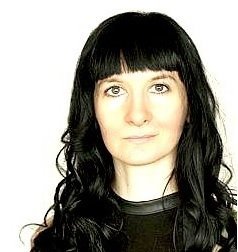84,000 health app publishers in 2017 – Newcomers differ in their go-to-market approach
Whilst the hype around mobile health has slowed down, the market for digital health still attracts new entrants, reveals the largest global study on mHealth App Developer Economics 2017. 26,000 mHealth publishers have entered the market since 2016, totaling 84,000. Furthermore, 78,000 new health apps have been added to major app stores.
The digital health market continues to grow attracting new entrants. Currently, more than 84,000 health app publishers have released mobile apps for the medical and health & fitness market, 45% more since the beginning of 2016. The growing number of app publishers fuels the number of apps developed. Since 2016, 78,000 new health apps have been added to major app stores, showing a strong growth of 25%. In 2017, 325,000 health apps have been available on all major app stores – the most there has ever been.
Follow R2G on LinkedIn to get soon the summary results of our latest research study on “What drives success in the digital health market?”

84,000 App Publishers
Who forms the global mHealth community?
In 2017 the types of mHealth publishers have increased in diversity.
28% of the global mHealth market is occupied by purely digital market players, bringing mostly “digital-only” business models to the table. 23% of the digital health market is represented by non-healthcare companies: IT/Tech companies, consulting/research companies and app developers/agencies. Universities, NGOs and educational organizations represent a minor fragment of the digital health market, having a 10% share altogether. Telco companies used to be big at the beginning of mobile health. In 2017 they have shrunk to a mere 1%.
Traditional healthcare stakeholders (industry incumbents: medical device and pharma companies, health insurers, hospitals, telehealth services) hold 32% of the market. These market players use mHealth solutions mainly as a digital extension of their core businesses.
Characteristics of newcomer mHealth publishers
What makes newcomers different from other market players?
A closer look at the results of the 2017 App Developer Economics Survey reveals specific newcomers’ characteristics. Here are a few to start:
1. New publishers concentrate more on HCP cases
The 5 key health segments newcomers’ app portfolio provide services for are: “connection to doctor” 25%, “heart and blood circulation” (20%), “staying healthy and fitness” (19%), “diabetes” (18%) and “mental health” (17%). In general, HCP integration plays only a minor role within the average mHealth app publisher’s portfolio.
2. New publishers are coming more and more from Europe and Asia
Newcomers tend to come mostly from Europe (46%) and the APAC region (17%), compared to the rest of the market. Especially Asian publishers have recently entered the mHealth app market.
3. Newcomers are more purely digital players
Newcomers also tend to have a different company background than the established players. The global share of new purely digital players is significantly larger than in the rest of the digital health market (40% vs. 28%). Digital intruders tend to be European, rather than North American.
4. New publishers focus more on their go-to-market strategy and better utilizing their resources
Newcomers have less external budget and spend much more of that money on external marketing. 46% of newcomers had less than 25,000 USD external budget. Only 4% had an external budget of up to 300,000 USD for outsourcing to a 3rd party. This is significantly larger than what the average mHealth company had to spend on their product development. In addition, newcomers tend to allocate more of their limited external budget on marketing compared to their established competitors. One fifth have spent up to 30% of their external budget on marketing. The three most popular marketing channels that work best for new publishers to increase their app awareness and get app downloads are: social media (49%), partnering with health associations (44%) and presenting the app on a conference (24%).
5. New publishers bet more on B2B business models
The main revenue sources for newcomers come from: licensing their products (30%) and sponsorship (20%), all purely B2B revenue services. Whereas the rest of the market share focus more on B2C business models.
Newcomers react on market dynamics. Their business models and niche know – how, for example in technology or retail, could transform mHealth app market and close the gap between users’ expectations/needs and different app markets potential. The mHealth App Developer Economics 2017 reveals detailed insights into the mHealth app market segments. If you are interested to find out more about the market players behind the mHealth app market, please reach out. The report also focuses on current market trends and future market developments.
Thank you for reading it. Your feedback and comments are highly welcomed.





